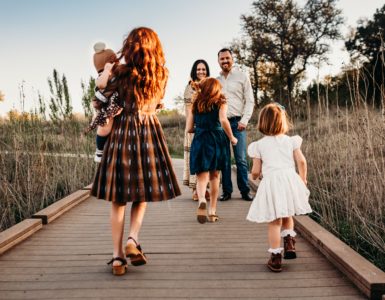I know, I know. It always feels like there is something we have to sit down and talk to our children about. However, these intentional conversations are important. Your children can rely on you to have sound advice about important things and ensure that they are making the correct choices when they leave your home, particularly in how they talk to others and what words they use.
Adults and children alike need guidance when it comes to speaking about adoption. Though it’s going to be beneficial for children and their own development, it will also alleviate a lot of potential hurt and frustration in future conversations.
Both my daughter and I have been hurt by improper language when it comes to adoption and I’ve known multiple birth parents and who have had similar instances of frustration and pain due to incorrect use of language. Learning more to teach your child can help you both understand that words matter and how to use them properly.
Why you need to Teach Your Child Proper Adoption Language
Kids say things that can be hurtful sometimes. As a parent who has adopted, I can tell you how hurtful it is to both my child and myself when someone says that I’m not a “real mother” or asks my daughter about her “real parents?”
Though children don’t have malicious intentions, it can seem that way to another child who hears things like this and in some instances, causes additional worry and anxiety in children who have been adopted, particularly those who have recently been adopted.
An initial conversation with children can be as simple as discussing how their words can impact others and how they should practice thinking carefully before speaking. Curiosity is good and if they have questions, they should ask, but appropriately.
I always happen to answer adoption questions when appropriate. Sometimes it’s not the time or the place, and if I don’t feel like I have enough information or lived experience in that area, I’m not going to have an answer, but I will direct you to a person or a resource to help!
Teaching children to talk properly about situations from race to adoption can ensure that they are making proper choices when they speak when you aren’t around to ensure that they are. Speaking correctly and referring to people appropriately is crucial and something that should be instilled in all children as soon as you feel comfortable having these conversations with them.
It is always my hope that parents have these conversations before their child has said something offensive or derogatory. The conversations that follow that behavior may not have the same impact and those words can be prevented with preemptive conversations.
Children who Aren’t Adopted May Need More Background
I don’t have the experience of having to sit down with a child to explain to them what adoption is because we began telling my daughter her story and using proper terminology since she was an infant. She knows that we built our family through adoption just like she knows her own name. This is advice that I give to other families who have built a family through adoption. Adoption language is easier to teach when you don’t have to set your children down and have a dedicated conversation.
When you are beginning to have these conversations with the children, make sure that you understand fully what you’re going to be discussing. This guide will help you understand what you need to know before you start to have conversations with your children: What you Need to Know When Talking about Adoption
It is important to ensure that kids of all ages (up until adulthood) know the correct terminology when discussing adoption. Not only can certain words and sayings be hurtful to someone that is a part of the adoption triad, but it also shows a level of empathy to learn these words that are important to instill in children.
Recently, when I suggested a person learn a little bit more about this language because a lot of what she said was incorrect and offensive, she said she was hardly around anyone that was impacted by adoption. This was shocking to me. Remember, you never know if someone you know, even someone that you’re close to, has a loved one who is a part of the triad or if they are themselves. It’s not like people walk around with labels like a birth parent or adoptee.
Speaking to your children candidly can help them better their vocabulary, learn empathy, and not offend others. I also find this to be a great catalyst to introduce the concept of adoption should your child grow up to build his or her family that way. (I’m always surprised when my daughter’s friends don’t even know adoption is a possibility for everyone. As adoption becomes something we talk about more, children may have more questions about this—which is good).
Not sure of the correct verbiage or terminology yourself? Check out this guide:
New to Adoption? 13 Terms you Need to Know
Continue to reference these guides as occasionally, there are new terms that are introduced to our vernacular!
You may feel like before you can even start to address adoption language, you need to have a better understanding of adoption and sharing that information with your child first. This article is a resource that will help you with those initial conversations.
Educating Children who aren’t Adopted about Adoption
Understanding Openness of Adoption and Relationships
It is not uncommon for children and adults alike to assume that everyone has the same type of openness when it comes to adoption as people that they know or scenarios they’ve seen depicted in movies and television shows.
Openness in adoption is generally something that takes place through several conversations between birth families and their counselors and occasionally, the adoptive parents are included in these as well.
The level of openness for adoption is open, semi-open, and closed. Closed adoptions are not typical anymore, though they were common in the past and more often than not, the only way adoptions happened. Today, adoptees and birth families tend to have open or semi-open adoptions. Open adoptions mean there can be communication and even visits, which are arranged sometimes by an adoption agency and sometimes between the families themselves.
Semi-open means a limited about of communication as decided on by the birth families and those who have adopted. In our case, it was a decision that our daughter’s birth family made. We send photos, updates, etc. to the agency and they see that her birth family gets them.
With both open and semi-open adoptions, no two scenarios are alike. Some birth families are very involved, while others visit less or not at all. Some families have phone calls, facetime, chat on social media, etc. Everyone is different. Knowing the proper terms is the first step in the direction of having this conversation. Encourage children to ask you questions before reaching out to a child that is adopted. We don’t see my daughter’s birth family and it can be a sad conversation for her, so be sure you understand that not everyone has the same experience and to let your children know this as well.
This article is an additional resource that I have shared frequently to help others understand openness: What is a Semi-Open Adoption?
Remember, not everyone has the same experience and each person will have a different level of openness with their birth families. In fact, many people don’t discuss this, so unless the information is offered to you, it may be something private that families prefer not to discuss.
Birth Parents Don’t “Give Up” Children
Though you want to encourage your children to be considerate of everyone, I ask you to consider teaching them appropriate language for adoption to also protect birth parents. I’m not a birth parent, but I know several and their feelings have been inexplicably hurt when people say that they “gave up” their child.
As an individual who has built her family through adoption, this also really makes my blood boil. No one “gave up” my child. Instead, an educated decision was made to place her in our care for a variety of reasons. Saying “gave up” infers that someone didn’t consider the child’s well-being, which is so far from the truth, it’s unreal.
So what should you say instead? You should say what really happened. Birth families make an adoption plan for their children. They don’t give anyone away. For those of us involved in the adoption triad, saying anything else is hurtful.
In my own opinion, when I hear someone say this, I’m so off-put and frustrated by their lack of education when it comes to adoption and adoption language, that my first response is to distance myself from them. My daughter hasn’t heard this phrase to my knowledge and honestly, I hope she never does. People that can’t (or in some very sad instances, won’t) use the correct terminology are not those that I want around my child.
Yes, I could correct these people, and believe me, I do, but remember that it is not the responsibility of those in the adoption triad to ensure that you and your child speak appropriately about adoption. This is something you should take the time to read more about yourself.
Preparing your Children for Conversations that are important
Depending on your child’s age, they may not be as open or accepting of these conversations. Little kids may be fine having them unless the reason you’re having this chat is because that child has gotten in trouble for saying the incorrect terminology or have been accused of bullying. If this is the case, you may want to take a beat before jumping right in to a time when they are more receptive.
Again, I haven’t had these conversations, but I have had to talk with my daughter to ensure that she understands certain things from divorce to the abilities of children in her classroom. We talk about it more informally, while we are playing with play-dough, building with legos, etc. I find that if her hands are occupied, she’s more likely to listen, but each child is different.
However you have the conversation, ensuring that kids know that this is important is also critical. You know best how your children communicate with you and what methods will work the best!
Older children should be more receptive to just sit down and have a conversation. However, don’t wait to teach your kids the correct terminology. I worry that many adults may be waiting until their child has already hurt another person to chat about this. Kids who are reading can always read the guides listed in the resources below on their own and you can speak with them afterward to answer any questions.
Turn to Resources when You Need Help
As I previously stated, people you know who are a part of the adoption triad are a resource if they have offered to speak with you about this. However, if they haven’t, it’s probably best to do something on your own to learn. The guides below can help you immensely.
Positive Adoption Language Guide
Thank you for reading this article and taking the time to educate yourself so that you are better equipped to have these conversations with your children. That alone is a step in the right direction. If you’re at a loss and don’t feel like the tactics described are working, this is also something where you might reach out to another trusted adult, teacher, doctor, etc. to help you chat about these things with your child. As I mentioned, every child is different. Every scenario is different, but the reality remains that kids need to know certain things, and a lot of the time, it coming from you early on will make all the difference!




